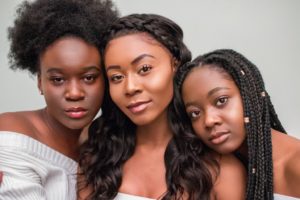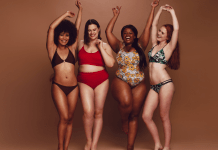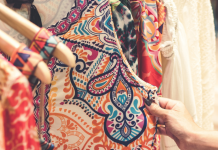Continued from “What I’ve Learned About Caring for Textured Hair :: Part 1.”
When you enter motherhood for the first time, you enter the “discussion” of motherhood, i.e., the debate. Even if you don’t actively participate in these debates, you will, with time, develop your own ideas about parenting, best practices for motherhood, and so forth. And chances are, you will become passionate about those opinions.
Guess what? That is okay. It is okay to have opinions; it is okay to share those with others . . . in my opinion, ha.
The debates about bottle or breast and self-soothing or not didn’t totally catch me off guard (although the intensity of them did). What did surprise me was learning about the discussions that center around the care of textured hair. In all my wavy-hair whiteness I had zero idea these varying opinions existed.
Let me be frank: It is not bad or wrong or unfortunate that people have different ideas about hair care. I honestly believe it is a beneficial conversation, and one I hope that continues to grow because the discussion allows for awareness, education, and accessibility.
Please consider reading “part one” of this textured hair series because in it I share some good news: Textured hair is just that – hair. I also cover the importance of understanding – even if just a teeny tiny little bit – about the history of black hair in our culture. Having some knowledge about that evolution is paramount to “getting” the rest of this article . . . you know, in my opinion.

Not Really Too Sure
As I’ve observed (and let’s be real clear here: I am only writing about my experience, not my expertise because I have none), there are roughly three different “camps” when it comes to caring for textured hair.
The first is in really good company with me: the “Not Really Too Sure” group. This is mortifyingly embarrassing, but here I go announcing it to the world . . . . When our brown-skinned baby joined our family, I ignorantly thought (and I’m even a little ashamed to admit) that all African-Americans knew everything there is to know about hair care. After I brazenly asked (again, mortified) every dark-skinned friend, co-worker, and maybe a stranger or two to tell me the secrets, I was stunned when I got the response of “not really too sure.”
This is when I first started to realize different opinions exist about how to care for natural hair. (Side note: When I use the term “natural” hair, I am referring to hair in its natural state — with its texture, curl, porosity as God gave it to you. In textured hair circles, natural can also mean you use organic, chemical-free products.)
There are layered and complicated reasons why I got the “not really too sure” answer. In a nutshell, some of the women I knew had never been taught how to care for their natural hair because it was taboo to wear your hair naturally when they were growing up. Their mothers didn’t, and they didn’t. For YEARS, people have gone to great lengths to alter, cover up, and hide their natural textured hair.
The reasons I fielded for this?
- “Better, safer to fit in than stand out.”
- “Natural, textured hair makes people feel uncomfortable.”
- “People cannot understand textured hair, or keep their hands off me when I wear it out.”
- “Natural hair isn’t considered professional.”
Again, I strongly encourage you to read a book or two, watch a documentary here or there, and chat with friends who’ve experienced this first hand. This will help you understand the overarching conversation happening here — and your place in it.
After I started to understand this more, the “not really too sure” camp made me feel more relaxed because we were learning together! That’s good news: We are living in a time when natural hair care is more and more accepted and popular. There are more products available than ever before. There are more people experimenting and teaching. We can learn together!
Now you may be wondering, so let me answer the question: If my black friends couldn’t guide me in caring for my daughter’s hair, then what in the heck were they doing with their own hair? Of course, there are various answers, but the most common answers involved the salon. Whether a perm (to straighten), wigs, extensions, the good ol’ beauty shop was the go-to for all their — and their children’s — hair care needs. Trips to the salon happened weekly or bi-weekly.
Straight Is the Way
Another philosophy about textured hair care is “straight is the way.” From my observation, some think that straight hair is easier to manage — along with the other ideas I mentioned above (helps to blend in, lessening racist encounters, etc.).
How do you straighten curly hair? Lots of ways! Some blow out (but doesn’t last super long); some use hot combs or hot iron. Yes, I have even heard of an old school technique of using an actual clothing iron. Usually this happens before you then put a kiddo’s hair in a style, like braids. There is also the option of using chemicals to straighten. Honestly, this is the most long-lasting option. Other ways will start to curl right back, while adding an extra dose of frizz, when the hair gets wet, encounters humidity, etc.
Embrace the Curl
I will hide behind no pretenses. Just like I have opinions about sleep training, discipline, and school work, I have opinions about textured hair care. As a mother to two brown-skinned beauties, I’ve formed these opinions based on my experiences, research, and overall parenting goals I have for my girls.
At our house we “embrace the curl.” I’m thankful that natural hair care is growing in acceptance, popularity, and availability. Ten years ago, you’d struggle to find textured hair products in mainstream stores. Now there are shelves of it!

We teach our girls to “embrace the curl” and style their hair naturally for these reasons:
- Be proud of your natural self. There is nothing shameful or different about having textured hair. Celebrate it. We want our girls to know NOTHING is wrong with the way they look — not their color, not their hair, NOTHING. There is nothing less than or undesirable about textured hair.
- Because we aren’t hiding the hair God gave us, we need to learn to take care of our hair. Excellent options for variety in products and styles exist to protect and nourish textured hair. We talk about that a lot at home . . . the fun of trying different products, educating ourselves on what our hair needs, experimenting with new styles and protective options, and on and on.
- My husband and I believe that if we can create a good foundation of health — healthy hair, healthy self-acceptance, and healthy curiosity — then we’ve done what we can to set our girls on a good path when they become old enough to take ownership of their hair care routine.
At the End of the Day
The way your wear your hair is up to you. For some frame of time, the way your children wear their hair is up to you too. Some people choose weaves or braids or wigs or straight hair because they like it. And honestly, that’s reason enough for me.
It’s important to note that you can do all of the above: braids, wigs, flat irons, curls in all their glory, extensions . . . . Textured hair is mega flexible and offers so many options! There isn’t a right and wrong way. This isn’t a moral dilemma. Do I have opinions and reasons why I super duper hope you’ll choose to embrace natural hair? Uh, yes. Will I secretly judge you or be disappointed in you if you don’t? Not a chance. There’s no reason to lose our hair over this.













